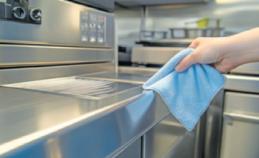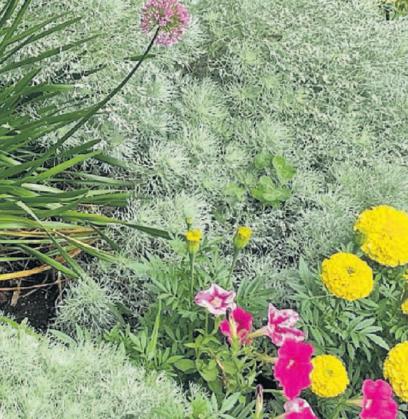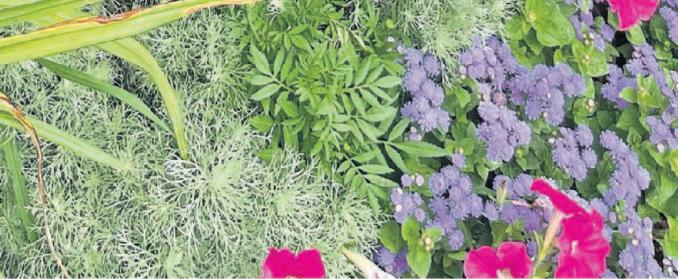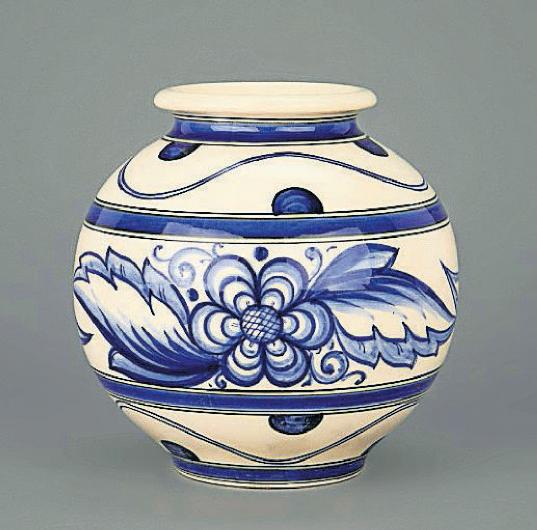














































R epub.C om
WHAT IS BEHIND those hedges?
Private gardens — inaccessible to the public — spark curiosity with an aura of magic and mystery. The Garden Conservancy Open Days program enables America’s finest private gardens to open to the public on specific days and is the only nationwide garden visiting program. Celebrating its 30th anniversary this year, Open Days has offered 1.5 million people a chance to look behind the hedges, with visitors to 4,500 gardens in 40 states.
The Garden Conservancy has partnered with four gardens across Franklin, Hampden, and Hampshire Counties, that will be open to the public on Saturday, May 31, with additional Open Days planned for June 7 and July 19. For travelers, there are additional Open Days in Massachusetts — and across the country — throughout the season.

“Garden visiting is more than just a leisurely stroll; it is an immersive experience that ignites the senses and nourishes the soul,” said James Brayton Hall, president and chief executive officer of The Garden Conservancy, in a statement. “It offers a unique opportunity to connect with nature, appreciate artistry, and gain inspiration from the dedication and vision of passionate gardeners. The anticipation for Open

Days events is palpable, with garden enthusiasts eagerly awaiting the chance to discover hidden gems and share in the beauty and tranquility of these private sanctuaries. The excitement stems from the rare privilege of stepping into these carefully curated worlds, each with its own story to tell, and the joy of connecting with fellow garden lovers who share a deep appreciation for the transformative power of gardens.”
The gardens opening on Saturday, May 31 are described in the gardener’s own words below:
Garden — Leverett, Mass. (Franklin County)
“The Earthworks Garden is 4 acres carved onto a steep, rocky, southwest-facing hillside at the bottom of Rattlesnake Gutter. The garden was begun in 1984. From the first the aim of the garden was design enhanced with sculpture. We have mature trees and shrub plant-

At left, and cover photo: Our Color Filled Retreat, a Springfield private garden, will be open to visitors as part of a Garden Conservancy Open Days program on May 31. Above, Suburban Garden in Transition, a West Springfield private
(SUBMITTED PHOTOS)
ings anchoring all levels of the garden. We feature a 135-year-old revamped Lord and Burnham greenhouse, numerous sculpture sites, and three garden buildings to gather and party in!”
Our Color-Filled Retreat — Springfield, Mass. (Hampden County)
“This half-acre garden is open once this year in the spring to highlight the over 100 blooming trees, shrubs, peonies, irises, poppies and roses. The garden was designed with 4-season interest in mind to provide color and variety throughout the year. We designed several paths and seating areas both inside and outside the gardens to provide different views of the plants, so we encourage you to take a moment and sit. The property is level land and there are brick walkways between the main sitting areas and mulched paths within the gardens.”
Suburban Garden in Transition — West Springfield, Mass. (Hampden County)
“We moved six years ago to a garden I referred to as lollipop trees, bonbon shrubs, and boring lawn. The plants had been constantly clipped so tight that all the flower-
ing shrubs such as azaleas and rhododendrons did not flower for two years; the blue hollies produced no berries until the third year. As the garden transitioned, numerous obstacles familiar to many home gardeners had to be dealt with: beautiful but overgrown shrubs, deer, moles, and voles, plants in the wrong place, poor soil, large trees, and being adjacent to wetlands. Rather than tearing out the plants that were there we choose to work with them; changing their size when possible, moving them when necessary and adding interesting and unusual plants to highlight the garden. The current garden is changing slowly to a mixture of natural forms, perennials, and flowing shrubs.”
Kinsey-Pope Garden — Amherst, Mass. (Hampshire County)
“This is a garden begun by my late husband and me (both academics with no formal garden training) soon after we moved here in 1978, working and learning together for 20 years. I have been the primary garden designer from the beginning, and designer and gardener for another 20 years, now

A six pack of peas might afford earlier harvest, but it will be meager as compared with the number of seeds you can sow in a furrow.
Lee Reich | In the Garden
ARECENT TELEphone call to my sister caught her setting zucchini transplants in her garden. “Transplanting zucchini?” I queried. “Have some faith in nature.” Transplants on sale this time of year too often entice gardeners to set out set them out in the garden rather than drop seeds into furrows.
I pointed out that not every plant likes to be transplanted. Tomato plants yanked out of the soil will resume growth in a few days if their roots are covered with moist dirt. Roots will sprout even if just a stem is in moist soil. But the roots of plants like corn, poppies, melons, cucumbers, and squashes (zucchini included) resent disturbance. Carrots, parsnips, and many other root crops also transplant poorly. Their taproots become the harvested roots. If bent or broken while young, forked, rather than straight, smooth carrots and parsnips result.
This is not to say that it is impossible to successfully transplant squash, poppies,
The Hampden Garden Club will be holding their Memorial Day plant sale on Monday, May 26, from 8 a.m. to noon, rain or shine at Academy Hall on Main Street.
The Holyoke Senior Center at 291 Pine St. will have a plant sale on Saturday, May 31 from 9
a.m. to 1 p.m. The sale supports the purchase of plants and supplies to beautify the grounds and give fresh herbs to the Senior Center kitchen. Please, join us to see our plant offerings and buy a raffle ticket for our gardening related prizes
Agawam Garden Club is planning its annual plant sale for Saturday, May 31. This year’s event will be held at the Historical Thomas Smith House, 251 North West Street, Feeding Hills and will run from 9 a.m.to noon.
and the like. Any plant can be transplanted if enough care is taken not to damage the roots. A plant doesn’t even know it has been moved when a large enough ball of soil is carried along with the roots. (To paraphrase Archimedes, “Give me a big enough shovel and I can transplant any plant.”) Enormous trees can be, and are, relocated if taken with sufficient roots (and money).
My sister told me that her zucchini plants were growing in plastic cell packs. If the roots were not yet crowding each other against the plastic, and if the plants were gently slid out of their containers, the transplants will survive. I’ve even heard of gardeners even transplanting carrots — very carefully, no doubt.
Many vegetables could be easily transplanted yet aren’t worth the effort. A friend transplanted peas one year. Granted, his peas were a foot high indoors when mine were just breaking through the ground out in the garden.









CONTINUES FROM PAGE F2
recently with some wonderful garden help.
It is a landscape of many uncommon trees with strikingly beautiful bark and a wide variety of textures, flowers, berries, and great autumn color; many shrubs with more than one season of beauty; perennials flowering in three seasons; ground covers of unusual dramatic effect covering all beds during all seasons; and in winter offering a wide palette of interesting shapes, lovely bark, and many evergreen trees and shrubs. In addition, there are three bridges over a stone-lined swale, a hand-built screened gazebo and curved top arbor, a charming little pond, many benches and Japanese stone lanterns, large-stone walkways and stone walls, and a Japanese-inspired fence surrounding all of the 1/ 2-acre garden.”
Since 1995, the Garden Conservancy’s Open Days program has opened the garden gates to thousands of private gardens across the
CONTINUES FROM PAGE F3
The sale will include many perennials and shrubs all from members gardens and all a bargain. Because the plants are all grown locally in members gardens, they are well acclimated to the area. Proceeds from the sale go towards funding the club’s scholarship and providing educational programs for the year. Please check the club’s website for further information agawamgardenclub. com.
The Springfield Garden Club will hold its annual plant sale on Saturday, May 31 from 9 a.m. to noon at the

country. Open Days offers the extraordinary opportunity to visit private sanctuaries in the U.S. and to learn from the gardeners behind these exceptional spaces. Founded by director Emerita Page Dickey and friend and fellow gardener Pepe Maynard, the Open Days program
has showcased over 4,500 gardens in 40 states and has welcomed and inspired over 1.5 million visitors since its inception.
For more information about the Garden Conservancy and other upcoming programs, go online to garden conservancy.org
Monkey House in Forest Park. Free entry to the plant sale is available at the Trafton Road entrance to Forest Park, 200 Trafton Road, Springfield. A spring tradition and the Club’s major scholarship fundraiser, this is not the kind of plant sale that focuses on re-selling plants from wholesale growers. Except for a few donations from generous area garden centers, these plants are from members’ gardens or have been grown from seed specifically for the sale This is a major fundraiser for our scholarship program and a lot of fun for club members and our customers alike. We LOVE to talk about the plants we are offering and, with many experienced gardeners and Master Gardeners among us, can offer useful suggestions on which plants to buy or answers to some of your gardening questions.
The Springfield Garden Club awards an annual schol-
But how many pea transplants can a gardener care for? I grow about sixty feet of double rows of peas in my garden, from which I expect about twelve pounds of peas. Each pea plant, though, yields only about a quarter of an ounce of peas. Who has enough space and time to sow, water, then transplant even two dozen pea plants for the paltry six ounces of peas those plants would yield?
Generally, plants whose seeds are sown closely spaced in the garden are not worth transplanting. In the flower garden, this would include alyssum, portulaca, and pot marigolds (though I admit to starting a few alyssum plants indoors so they would spread and flower sooner).
directly in the garden, then thinned to the appropriate spacing.
“Trust nature,” I told my sister. “Sow seeds on the correct planting date in good garden soil, and they’ll germinate. Save transplanting efforts for vegetables like tomatoes and peppers, which need to be started early indoors in order to ripen their fruits in a reasonable amount of time. Or broccoli and cabbage, because individual plants yield a substantial amount to eat. Tomato, broccoli, and cabbage plants don’t object to being transplanted, and not too many transplants are required since they are set a couple of feet or more apart in the garden.”
arship of between $2,000 to a graduating high school senior, undergraduate or graduate college student majoring in a full-time plant science or environmental studies program, such as horticulture, floriculture, landscape design, conservation, forestry, botany, agronomy, plant pathology, environmental control, land management or other allied fields. Using proceeds from past plant sales, the club has given out over $80,000 in scholarships to students in the last 30 plus years and we look forward to adding to that this year. For more information on the Springfield Garden Club events go to www. springfieldgarden clubma.org or visit them on Facebook at https://www. facebook.com/Springfield MAGardenClub/
Send items for Garden Notes to pmastriano@repub.com two weeks prior to publication.
In addition to peas, some other vegetables not worth growing as transplants include spinach, mustard, and beans. Black Seeded Simpson and other leaf lettuces (sometimes referred to as “cutting lettuces”) are generally sown directly in the ground. While the plants are still small, I’ll run a knife near ground level every couple of feet or so slicing off their tops. For the next salad, I’ll choose new groups of plants to cut. Within a couple of weeks, plants are again ready for harvest.
Heading lettuces such as iceberg, Bibb, and romaine are worth transplanting because each plant needs space in order to head up well. Alternatively, heading lettuce could be sown
Seeds which are particularly finicky or valuable (due either to scarcity or cost) also are worth growing initially in pots. Although hardy cyclamens (Cyclamen heredifolium) do self-seed under ideal conditions, I wanted to greatly increase my holdings. They’re a little finicky to sprout, so I collected seeds from one of my plants and planted them in a seed flat, where I could watch and nurture them individually, then transplant them to individual pots. Here it is, three years later, and later this summer, delicate pink flowers will hover like small butterflies above each of the ten fat tubers.
Sure, it may be worthwhile to start a few corn plants indoors, because fresh sweet corn is one of the ultimate gustatory pleasures of the vegetable garden. But is zucchini that toothsome?















By Jeanne Huber
The Washington Post
Q. Pet sitters decided to use Bar Keepers Friend on my stainless-steel refrigerator doors. (They said the Internet told them this was how to clean them.)
Both doors are now slightly discolored and have streaky spots. I have tried applying a light film of olive oil (more internet advice) as well as Weiman’s Stainless Steel Cleaner and Polish, neither of which has removed the streaky shadows. Is there anything I can do to return the doors to their original streak-free state?
A. Many people have a lovehate relationship with their stainless-steel appliances. They look sleek and elegant, but they’re also known for showing fingerprints and smears. It might seem like a good idea to use Bar Keepers Friend Cleanser to remove the marks. Around the top rim, the label lists a parade of suitable surfaces. “Stainless steel” is centered above the product name, followed by porcelain, ceramic, copper, brass, fiberglass, Corian, chrome and aluminum. The remaining space, flagged in red, says “works great on stainless steel sinks.”
Smaller type on the back of the label reveals more. There, under kitchen uses, the label advises using it on cookware, sinks, stoves, oven doors, backsplashes, non-stone countertops and drained floors. But it warns that the powder can scratch or dull delicate surfaces, and it specifically recommends against using it on appliances with a brushed metal exterior or on stainless steel that a magnet sticks to. That’s because the powder contains mild abrasives that add muscle for cleaning pots but can scratch a refrigerator door, especially if it’s rubbed on in a direction different from the way the metal was brushed.
Recommendations for cleaning a stainless steel sink or pot differ from those for cleaning a stainless steel refrigerator door because of nuances in how the stainless steel is made. And even for refrigerator doors, the advice isn’t always the same; high-end refrigerators (with price tags around $5,000) usually contain higher-grade stainless steel than lower-cost models.
Stainless steel is a mixture of iron, chromium and other metals, but the

Recommendations for cleaning a stainless steel sink or pot differ from those for cleaning a stainless steel refrigerator door because of nuances in how the stainless steel is made. (ADOBE STOCK IMAGE)
specifics and their proportions vary. Chromium, which needs to make up at least 10.5 percent of the mixture for the alloy to be considered stainless steel, protects the iron from rusting. Chromium atoms at the surface combine with oxygen in the air to form a layer that blocks other oxygen atoms from combining with the steel and forming rust. If the chromium-oxide layer is removed, it can form again but only if the chromium is able to be in contact with oxygen. If the metal is caked
layer, leaving the stainless steel looking stained rather than shiny and bright. To prevent this, even on surfaces where the cleaners are recommended, the directions say to rinse thoroughly within a minute of application. “They left it on too long,” McKinley said.
Her advice: Clean the refrigerator door with a little Dawn hand dishwashing detergent and warm water. “Use a sponge. Clean and rinse. Don’t use anything else on it.” Dry the surface with a clean cloth,
And even for refrigerator doors, the advice isn’t always the same; high-end refrigerators (with price tags around $5,000) usually contain higher-grade stainless steel than lower-cost models.
with rust, that needs to be removed first. Coating the surface with oil, the key ingredient in many stainless steel polishes, slows the self-healing.
Janet McKinley, corporate administrator and a 47-year employee of SerVaas Laboratories Inc., which makes Bar Keepers Friend, said she suspects that whoever used Bar Keepers Friend on your refrigerator didn’t read the full label. The brand’s powdered cleanser and its Soft Cleanser both contain oxalic acid and citric acid, which can eat into the chromium oxide
light more uniformly. The tips you read about using olive oil are based on the same idea.
A woman who answered a call to the Weiman company, based in Gurnee, Illinois, didn’t have any suggestions for what else you could try, other than calling the manufacturer of your refrigerator. But Gerry Golden, president of Golden Ventures, which makes Cerama Bryte Stainless Steel Appliance Cleaner and Stainless Steel Polish, said you might get better results by using more of the polish. “Usually, when people say it still looks streaky, they didn’t apply enough,” he said.
He agreed that you might be able to restore a like-new look simply by cleaning the door with hand dishwashing detergent, rinsing it thoroughly and drying it. But it might take a long time even months for the color of the metal to become uniform, he said. And it wouldn’t heal any scratches.
To get a better look more quickly, he recommended using Cerama Bryte Stainless Steel Polish, which he said has one of the highest concentrations of mineral oil among commercial stainless steel cleaners. Apply it liberally to a 12-by-12-inch section of the door and wipe off the excess with a microfiber cloth or paper towel. Then reapply and again wipe off the excess. “Keep applying until you get a completely uniform covering.” Once you realize how much you need to apply, do the whole door. Golden said to reapply the polish periodically, when the door looks dry.
ideally microfiber.
The idea, she said, is to remove oily residue from fingerprints, as well as the stainless steel cleaner you used. Then give the bare metal a chance to self-heal. Eventually, when you need to clean again, she recommends using Bar Keepers Friend Stainless Steel Cleaner and Polish spray.
Like the Weiman’s Stainless Steel Cleaner and Polish that you used, the Bar Keepers polish contains mineral oil. The oil fills minute crevices in the stainless steel, resulting in a smoother surface that reflects
Even though the Cerama Bryte polish and similar mineral oil polishes from other manufacturers come in spray bottles, Golden recommends against spraying a refrigerator door because overspray is almost guaranteed to wind up on the floor, making it slick. Instead, he said, spray the polish onto a cloth and rub it on.
Mineral oil polishes create a protective barrier that helps prevent fingerprints, water spots and oxidation. The polishes could be used on any grade of stainless steel without hurting the metal, but they are not always needed. GE does not suggest mineral oil polishes for the refrigerators it makes with high-grade stainless steel. Instead, it recommends cleaning them with hand dishwashing soap and water, or with the water-based Cerama Bryte Stainless Steel Appliance Cleaner.
Terry & Kim Kovel | Antiques & Collecting
WELLER POTtery, operating in Zanesville, Ohio, from 1872 to 1948, was, at one point, the world’s largest pottery. Some of its most famous artists came from around the world. French designer Jacques Sicard created the iridescent glazed Sicardo line, which even today includes some of Weller’s most desirable pieces. Frederick Hurten Rhead, born to a family of ceramicists in England, worked for Weller and several other American art potteries before designing Fiesta dinnerware for the Homer Laughlin China Co. John Lessell, who was from the pottery-making city of Mettlach, Germany, served as the art director of Weller from 1920 to 1924 and designed two pottery lines with metallic glaze. Weller had many other foreign-born designers who were not quite as well known. One was Francesco DeDonatis, who was born in Teramo, Italy, a region with a long history of colorful majolica. He designed the DeDonatis pottery line for Weller, which is decorated with stylized flower and plant motifs in bright colors.
This DeDonatis vase is blue and white, a classic color scheme for various ceramics. It sold for $128 at Revere Auctions. Although DeDonatis was the designer, he did not decorate this vase. It is signed with the mark of Weller artist Charles Fouts.
Q. I am submitting information on a family French majolica wreath and would like to know its scarcity and value. I understand it is a cemetery grave decoration from the Alsace-Lorraine region of France. It was produced between 1882 and 1889 by Utzschneider & Co. This large piece is in excellent museum quality, measures 20 inches in diameter, and stands 7 inches high. The head of the

is from the pottery’s DeDonatis line, named after creator Francesco DeDonatis and inspired by pottery from his home country of Italy. (REVERE AUCTIONS)
workshop that produced this type of piece was Victor Kremer, an artist who made a large number of artistic pieces in Sarreguemines. It is fully documented with correspondence from the Regisseuse des collections Musees de Sarreguemines.
A. The Utzschneider & Co. factory was established in Sarreguemines in Lorraine, France, in about 1800. The factory is one of Europe’s most important majolica makers. The tradition of decorating graves with majolica wreaths was established in the 19th century, and ceramics factories still make the wreaths today. Although the wreaths are not well known outside France, Switzerland, and Brussels, modern wreaths are often marked “Made in France” as if they were for export. Authentic 19th-century French majolica wreaths are relatively rare and sell for about $200. Yours may be worth more because of its size, condition, and documentation.
Q. I have some “blood chits” from World War II and some Japanese money from the same era. I would like to know where to dispose of these items. Perhaps an auction house for military items or a personal collector.
A. Blood chits were issued to military pilots and air crews in case they were downed in combat. They had messages in the local languages identifying the fliers and promising rewards to whoever assisted them. They were often part of an evasion kit that might also include phrase books, maps, currency, or items to barter. Blood chits from World War II were made of materials like silk, leather, and cotton. Some were made as patches sewn onto uniforms, like the ones used by the American Volunteer Group, also known as the Flying Tigers, in China from 1941-42. Today, World War II blood chits are popular among collectors of military memorabilia. They
tend to sell for about $50 to $200, depending on the material, condition, design, and number of languages. Some extremely rare styles in excellent condition can sell for thousands of dollars. Like many military collectibles, blood chits are sold at general antique auctions and shops. Many major auction houses hold militaria auctions, and there are dealers and shows specializing in military collectibles. Military Trader magazine, published by the same company as Kovels Antique Trader, has a directory of dealers. As for your Japanese money, we recommend contacting a reputable local coin dealer. Numismatics News, also by the same publisher, may have more information.
TIP: Do not put water in a pottery container with an unglazed interior. The water will be absorbed and eventually stain the container.
Current prices are recorded from antiques shows, flea markets, sales and auctions throughout the United States. Prices vary in different locations because of local economic conditions.
Furniture, chair, Louis XVI style, gilt wood, cane back and seat, oval splat, molded trim, fluted legs, 19th century, 36 1/2 inches, pair, $75.
Capo-di-monte, vase, shaped flared rim, relief Classical scene, figures, trees, blue, gilt trim, leafy
Kovels answers readers’ questions sent to the column. Send a letter with one question describing the size, material (glass, pottery) and what you know about the item. Include only two pictures, the object and a closeup of any marks or damage. Be sure your name and return address are included. By sending a question, you give full permission for use in any Kovel product.
scrolled handles, pedestal foot, square base, shield and wreath mark, Capodimonte Italy, 12 inches, $85. Silver-Dutch, serving spoon, oval bowl, pierced lattice panels, relief scene, boats, dock workers, scrolled handle, bird on terminal, hallmarks, 20th century, 13 inches, $90. Hawkes, bowl, mold blown, cut glass, six-lobed rim, cane crossbar center, hobstar border, signed, 6 inches, $270.
Silver-German, vase, large raised drops around rim and base, flared, twist fluted, engraved leaves, spread foot, art nouveau, hallmarks, 7 inches, $345. Quilt, patchwork, alternating blocks, eight-point stars, maroon, blue, cream, cotton, late 1800s, 70 x 53 inches, $375. Bottle, medicine, apothecary, cover, Baroque style, lobed, gilt brass setting, twist columns, scrolls, Continental, 20th century, 13 x 8 inches, $385. Toy, truck, dump, chain lift, dark blue, red wheels, white rims, pressed steel, Buddy L, 1920s, 9 x 25 inches, $595. Coca-Cola, poster, woman standing, drinking from glass, long dress, long gloves, hat with red roses, Drink Coca-Cola, Delicious, Refreshing, Wolf & Co., Philadelphia, frame, 20 x 10 inches, $1,750. Furniture, cabinet, Huanghuali wood, overhanging top, drawer over two doors, round brasses, flared base, stretchers, square feet, Chinese, 19th century, 31 1/2 x 21 inches, $2,560.
Names, addresses or email addresses will not be published. We do not guarantee the return of photographs, but if a stamped envelope is included, we will try. Questions that are answered will appear in Kovels Publications. Write to Kovels, The Republican, King Features Syndicate, 628 Virginia Dr., Orlando, FL 32803 or email us at collectorsgallery@ kovels.com.
By A lex Veiga Associated Press
The average rate on a 30-year mortgage in the U.S. climbed this week to its highest level since mid-February, a setback for home shoppers that threatens to slow sales further this spring homebuying season.
The rate increased to 6.86% from 6.81% last week, mortgage buyer Freddie Mac said Thursday. A year ago, the rate averaged 6.94%.
Borrowing costs on 15-year fixed-rate mortgages, popular with homeowners refinancing their home loans, also rose. The average rate ticked up to 6.01% from 5.92% last week. It’s down from 6.24% a year ago, Freddie Mac said.
Mortgage rates are influenced by several factors, including global demand for U.S. Treasurys, the Federal Reserve’s interest rate policy decisions and bond market investors’ expectations about the economy and inflation.
The average rate on a 30year mortgage has remained relatively close to its high so far this year of just above 7%, which it set in mid-January. The average rate’s low point so far was five weeks ago, when it briefly dropped to 6.62%. It’s now at its highest level since Feb. 13, when it averaged 6.87%.
The elevated mortgage rates, which can add hundreds of dollars a month in costs for borrowers, have discouraged home shoppers, leading to a lackluster start to the spring homebuying season, even as the inventory of homes on the market is up sharply from last year. Sales of previously occupied U.S. homes fell last month to the slowest pace for the month of April going back to 2009.
716 Spring Valley LLC, to Bulldog Realty Group LLC, 36-38 Hope Farms Drive, $450,000.
Daniel M. Walsh, representative, and Karen E. Walsh, estate, to Emtay Inc., 31 Cosgrove St., $231,000.
34 Spring St., $223,200.
Nancy A. Paul and William J. Paul to Jameson Lolos, 17 Poplar St., $320,000.
Pauline T. Lizotte, Joseph R. Fonseca and Richard R. Godbout to Edward R. Lychwala and Ruth Lychwala, 25 Fairview Village Court, Unit 8, $412,000.
Rebecca A. Nicoll to Wayne Hoppock and Michelle E. Hoppock, 200 Lambert Terrace, Unit 33, $262,500.
The recent rise in mortgage rates reflects moves in the 10-year Treasury yield, which lenders use as a guide to pricing home loans.
The yield, which had mostly fallen after climbing to around 4.8% in mid-January, began rising March amid investor anxiety over the Trump administration’s trade war. It rose again last week after the U.S. and China agreed to a 90-day truce in their trade dispute, raising expectations that the Federal Reserve won’t have to cut interest rates as deeply as expected this year in order to shield the economy from the damage of tariffs.
This week, long-term bond yields surged again after Moody’s lowered its credit rating for the U.S. over concerns about swelling federal government debt.
The 10-year Treasury yield was at 4.56% in midday trading Thursday after the House of Representatives approved a bill that would cut taxes and could add trillions of dollars to the U.S. debt.
“Since mortgage rates closely track the 10-year yield, this upward pressure has translated into increased borrowing costs for homebuyers, which means higher mortgage rates,” said Jiayi Xu, an economist at Realtor.com.
The increase in mortgage rates is discouraging some would-be homebuyers during what’s traditionally the busiest period of the year for home sales. Last week, mortgage applications fell 5.1% from a week earlier as home loan borrowing costs increased, according to the Mortgage Bankers Association.
Applications for a loan to buy a home were still up 13% from a year earlier.
Economists expect mortgage rates to remain volatile in coming months, with forecasts calling for the average rate on a 30-year mortgage to remain between 6% and 7% this year.
Heather L. Doe to Michael S. Smith and Kathy R. Smith, 70 Corey Colonial, $270,000.
Money Homebuyers LLC, to Alex Coffey, 6 Beekman Drive, Unit 6, $275,000.
Vasquez Remodeling Inc., to Rick J. Zappala and Lisa Zappala, 1341 Suffield St., $360,000.
William Ilya Kukharchuk and Diana Paskal to Diana Paskal, 52 Zacks Way, $346,331.
Richard Bruce Pierce, Richard B. Pierce, Elaine Renaud Pierce and Elaine R. Pierce to Richard B. Pierce, trustee, Elaine R. Pierce, trustee, and Richard B. Pierce Revocable Trust, 63 Cherry Lane, $100. Scott Kaplan to Ann B. Morse, 155 Farmington Road, $525,750.
Kathleen M. Shea to Colton Skorupski and Jessica Skorupski, 777 Federal St., $430,000.
Jennifer M. Fox to Amber Avery and Jayden Fox, 419 Northfield Road, $304,000.
Raelene A. Bardwell and Kimberly A. Ortiz, personal representative of the estate of Russell J. Bardwell to Alexandru Teaca and Irina Teaca, 41 West Mountain Road, $225,000.
Valerie Smith to Lynne M. McHugh, trustee of the Lynne M. McHugh Trust, 2120 Route 2, “aka” 2120 Mohawk Trail, $200,000.
Aldo Properties LLC, to Barbara Torres Marzan and Yaimelis Rivera Torres, 43 Edbert St., $360,000.
Anne Molinari, representative, and Olimpia Daniele, estate, to Daro Kem and Boren Kem, 1645 Westover Road, $400,000.
Brian Root, Kimberly Ann Root and Kimberly Ann Desmarais to Benjamin August Burati and Rebecca Anne Burati, 43 Percy St., $320,000.
Carol Bogdanovich to Jaime Abbott, 97 Rimmon Ave., $238,500.
Chong Sun Lawrence to David Fredenburgh, 55 Empire St., Unit 8, $210,000.
Christine Vierthaler to Abigail N. Beauregard and Nicholas Walczak, 144 Deane St., $358,000.
Danielle Eaton, representative, Nicolaas Eaton, representative, and Steven Eaton, estate, to Emtay Inc., 528 Broadway St., $185,000.
Kelly J. Youngberg, representative, and Kelvin R. Boisvert, estate, to 445 Shawinigan JMC LLC, Fuller Road, Lot 5, $180,000.
Lara Sharp to Immacolata Silvestri, 319 Casey Drive, $400,000.
Michael E. Casper and Eva Faith Balucas Casper to Sara E. Mackiewicz and Sean M. Vershon-Newbury,
Robert E. Moriarty to JoeJoe Properties LLC, 102 McCarthy Ave., $180,000.
Tracy Laduke to Michael Derby and Kelly P. Lyons, 279 Bostwick Lane, $420,000.
Greek Orthodox Community Holy Trinity Inc., and Greek Orthodox Community Holy Trinity Church Inc., to Orthodox Patriarchate-Coptic Diocese of New York & New England Inc., 32 Grattan St, $650,000.
Andrew D. Clogston to Jason F. Farrick and Taylor M. Farrick, 110 Lee Road, $515,000.
Evelyn Carpenter to Randy Parisi, 63 Chestnut St., $369,900.
Jennifer Quynn-Dale and Robert F. Waters to Ye Seul Kotorobay and Yelisey Kotorobay, 28 Savoy Ave., $375,000.
Mary L. Sando to Adam J. Moses and Laura J. Moses, 17 Rogers Road, $370,000.
Michael R. Bednaz and Melissa D. Bednaz to Anthony Trombly and Mary Ann Trombly, 144 Mapleshade Ave., $495,000.
Samuel O’Hearn and Olga O’Hearn to Timothy Eshak, 22 Young Ave., $391,500.
SN1 Properties LLC, to JaJan LLC, 671 North Main St., $287,125.
Roman Catholic Bishop of Springfield to CTW Enterprises Inc., 35 Pleasant St., and 39-42 Pleasant St., $825,000.
Gina R. Gallant and William G. Gallant to Alexandra Katipunan and Markus Katipunan, 54 Mountain Road, $380,000.
Linda Chudzik and Michael R. Chudzik to Christopher Prondecki, 32 Walnut St., $347,000.
Sydney Snyder to Warren W. Snyder and Charles E. Snyder, 162 Taylor St., $100.
Astrid M. Burke and Trey D. Jones to Caitlin C. Dubuque.,79 Hope St., $295,000.
Channing L. Bete Jr., and Marie P. Bete, trustees of the Channing L. Bete Jr. Revocable Trust, and trustees of the Marie P. Bete Revocable Trust, to Amy Burnside and Robert Gilmore, Meadow Wood Drive, $4,000.
James D. Whitney to Shaina D. Lakanen and Joshua C. Vasquez, 367 Country Club Road, $385,000.
SEE DEEDS, PAGE F9
Garrett D. Connelly, trustee of the Connelly Realty Trust, to Alexa Beach, 84 Congress St., $370,000.
Linda M. Courtney and John L. Newell to Linda M. Courtney, trustee, and Linda M. Courtney Revocable Trust, 58 Main St., $100. RIPS LLC, to James S. Fusek, 228 Straits Road, $2,500.
Vincent D. Frano and Isa Wang to Elizabeth Stevens and William R. Stevens, 71 Dodge Road, $215,000.
Mary D. Dinneen and Dolores Maietto to Bradley Arcoite, 54 Williams Road, $6,000.
Real Estate Investments Northeast LLC, and Real Estate Investment Northeast LLC, to Reina I. Rodriguez and Jennezka I. Figueroa, 49 Howard St., $350,000.
Dennis C. Carboneau, estate, Dennis E. Carboneau, estate, and Joan C. Simard, representative, to B&B Real Estate LLC, 14 Longfellow Road, $325,000.
Draymore Properties LLC, to Holyoke Project LLC, 251 Appleton St., $133,000.
Manuel E Rivera to Albert John Prokop, 35 N Summer St, $345,000.
Pah Properties LLC, to Debbie S Martinez Ayala, 2 1/2 James St, $310,000.
Stephen G. Antil, Thomas A. Antil, Peter D. Antil, Nora L. Antil, Fe M. Trudell and Vincent J. Antil to Caitlin Moran and Joseph Moran, 9 Upland Road, $326,000.
Diane V. Minalga to Olivia M. Minardi, 87 Riverview Ave., $307,000.
John M. Sadak to Thomas George and Noella Moshi, 28 Ely Road, $584,000.
MA Cardinal Group LLC, to David Schnorbus and Hayley Schnorbus, 137 Sheffield Ave., $449,900.
Michael A. Daniele, Judith A. Daniele and Susan A. Prairie to Joseph Herda and Phyllis Kung, 360 Frank Smith Road, $516,000.
Claudia G. Kapinos, representative,
and Chester E. Kapinos, estate, to Michel Plourde and Donna M. Plourde, 308 Miller St., Unit 12, $405,000.
Joewie Maldonado Reyes to Henry Mercado, 382 Holyoke St., $233,000.
Lisa Judkins, conservator, Daniel Bamford and Dorothy Bamford to Daniil Gerasimchuk and William Rivera, 143 James St., $246,000.
Whitetail Wreks LLC, to MHI Builders LLC, Balsam Hill Road, Lot 68, $177,900.
Frank W. Hull to Jeremy J. Mason and Jay Joseph Mason, 294 Main St., $380,000.
Kitty E. Griswold to Zachariah Ashton Miller, 90 East Taylor Hill Road, $325,000.
Peter Paul Petrofsky Jr., to Jussi Silliman, 141 Wendell Road, $350,000.
Simon J. Salloom and Jessica Salloom to Michael Even and Joan Keefe Even, 222 Elm St., $759,000.
Amanda Surgen, personal representative, Michael Surgen, personal representative, and Paul C. Surgen, estate, to Sarah Jeanne Chrystler and Noah Yoskowitz, 34 High St., $533,000.
Xiuyu Liang and Chaoxian Wu to Curtis Ross Brunelle and Zsazsa Vanessa Brunelle, 427 S. Mountain Road, $480,000.
James A. Turner and Mitchel J. Turner to ARPC LLC, 719 Mt. Hermon Station Road, $188,000.
Mitchel J. Turner to ARPC LLC, 725 Mt. Hermon Station Road and Gerrish Road, $2,000.
Seth T. Wiggin to Sandra L. Duprey, 121 School St., $339,000.
Jason Bassett and Shannon Paige Archambault, “fka” Shannon Bassett, to Nathan James Smith, 31 Strowbridge Road, $359,000.
Joseph M. Polana and Maureen F. Polana to Donna R. Lajoie and Jeffrey A. Lajoie, 3 Converse Road, $459,900.
Russell M. Berry Jr., personal representative of the Estate of Patricia J. Berry-Lamb, “fka” Patricia C. Berry, to Mary E. Roth-Dupuis and
Tyler R. Warner, 51 Ward Road, $300,000.
Dominic Kirchner II, trustee, and Targaryen Realty Trust, trustee of, to Kayla Fisher, 8 Christine St., $340,000.
Erin L. Ruggiano to Tayjah Jones and William H. Russin Jr., 1400 Park St., $340,000.
Rocket Mortgage LLC, Todd M. Stafford and Joan C. Stafford to 51 Summit Avenue LLC, 1242 S Main St., $183,000.
Cornerstone Homebuying LLC, to Lindsay Whiting and Kristen Clausen, 338 Daniel Shays Highway, $515,000.
Leisha A. Eaton and Mark A. Eaton to Jenifer Lawrence and Matthew Price, 53 Maple St., $445,000.
Raymond Laroche, Darlene Marcoux, Nancy Lee Laroche and Nancy Laroche to Jonathan Marcoux, 2 Edgewater Lane and 6 Edgewater Lane, $100.
Daniel T. Meggison and Andrea A. Zabala Meggison to Yuliya Divnich and Viacheslav Yaremenko, 13 Great Brook Drive, $485,000.
DePalma Realty Inc., to 535 College Highway LLC, 535 College Highway, $980,000.
Fiore Realty Holdings LLC, to Hamelin Framing Inc., Silvergrass Lane, Lot 14, $150,000.
Fiore Realty Holdings LLC, to Hamelin Framing Inc., Silvergrass Lane, Lot 19, $130,000.
Michael A. Burns to Agilitas Energy Inc., 22 Nicholson Hill Road, $275,000.
Michael A. Burns to Agilitas Energy Inc., 85 College Highway, $150,000.
Richard R. Deaton, Linda R. Bousquet and Gary L. Deaton to Andrew Felix, 276 South Longyard Road, $145,000.
White & Lenihan Inc., to Point Grove Road Realty LLC, 108 Point Grove Road, $213,750.
Alice Cortes to Sarah Takasaki and Bryan Takasaki, 166 Hancock St., $284,500.
Alwin L. Burke to Elton F. Gartman and Keisha Annika Johnson, 114
Barrington Drive, $490,900.
Bretta Construction LLC, to Custom Art Construction LLC, WS Buckingham St., $55,000.
Diane DeBarge, Deborah Ann Lind, Thomas F. DeBarge and Brian T. DeBarge to Jose Roman Almonte, 27 Jordan St., $240,000.
Douglas Jonathan Dichard and David Bibeau to Emtay Inc., 149 Fountain St., $200,000.
E & D Stovall LLC, to Hoang Vo, 11 Moore St., $335,000.
Elaine Hebert-Dancik, estate, and Kyrill Dancik, representative, to Edwin Joel Lopez, 33 Churchill St., $291,000.
Eyeri M Perez-Padilla to Dylan Roda, 84 Glenwood St., $261,300.
Frank Orszulak, representative, and Michael P. Gagne, estate, to Sammy W. Spano, 635 Newbury St., $208,000.
Gary Robert Cheetham and Debra Ann Cheetham to Anthony Rodriguez, 235 State St., Unit 222, $215,000.
GEECAA Investments LLC, to Kenneth Michael Daviau, 1333 Page Boulevard, $205,000.
Gerald F. Lewis, beneficiary, Virginia P. Lewis, estate, Luigina Lewis, estate, Virginia Lewis, estate, and Virginia Phyllis Lewis, estate, to R & R Home Improvement & Remodeling LLC, Paramount St., Lot 113, $40,000.
Grant Realty LLC, to 85-87 Carando Realty LLC, 85-87 Carando Drive, $1,300,000.
Grecia Payero and Grecia Valtonen to Cheryl E. Smith, 172 Sunridge Drive, $258,000.
H&P Investments LLC, to Welmer A. Lopez Ramos, 443-445 Franklin St., $327,000.
Ibrahim M. Aljashaam to Barbara V. Pereira and Miguel A. Pereira, 31 East Bay Path Terrace, $299,900.
Jesus Vega to Fumi Realty Inc., 55 Governor St., $162,500.
JJS Capital Investment LLC, to Kordell A. Kwarko and Kendall Kwarko, 480 White St., $516,000.
Joanne M. Meara and Michael R. Ferullo to Jennings C. Kelley, 66 Alvin St., $205,000.
Joel Pumarejo to Shekyara Johnson, 199 Lamont St., $310,000.
Jose A. Morera and Wendy Morera to Natasha Cortes and Alice Cortes, 138-140 Magnolia Terrace, $450,000.
Joseph A. Lapointe to Dominic Kirchner II, trustee, and Methuselah Realty Trust, trustee of, 32-34 Somerset St., $205,750.
Kelnate Realty LLC, and Corpulent Porpoise LLC, to Corpulent Porpoise LLC, 228 Belmont Ave., $100.
Kerby Roberson to P&R Invest-
ments LLC, 77 Fort Pleasant Ave., $220,000.
Linda M. Carbone and Debra A. Clarke to Kristina F. Deome and Emily J. Perkins, 48 Perkins St, $351,000.
Matthew Torff to Emily Lauren Zeno, 147 Nassau Drive, Unit 147, $225,000.
Michael P. St. Marie, representative, Robert J. St. Marie, representative, and Robert J. St. Marie, estate, to Ashley King, 363 Tremont St., $340,000.
Pah Properties LLC, to Hispanic Resources Inc., 32 Cottonwood Lane, $335,000.
Pah Properties LLC, to Xavier Castro Alvelo, 1577 Bay St., $309,000.
Round Two LLC, to Altagracia M. Rodriguez, 66 Mapledell St., $275,000.
Round Two LLC, to Yves MD Alexandre and Rachel Tatiana Alexandre, 56 Kenyon St., $430,000.
Sareen Properties LLC, to Quilino Perez and Jennifer Morales, 97 David St., $350,000.
Shannon C. Paquette to J&L Home Improvements LLC, 185 Drexel St., $169,000.
Springfield City to Old Hill Infill LLC, East Side Hancock St, $500.
Springfield City to Old Hill Infill LLC, South Side Lebanon St, $500.
Springfield City to Old Hill Infill LLC, South Side Melrose St., $500.
Springfield City to Old Hill Infill LLC, South Side Union St., $1,500.
Springfield City to Old Hill Infill LLC, South Side Union St., $500.
Springfield City to Old Hill Infill LLC, South Side Union St., $500.
Springfield City to Old Hill Infill LLC, South Side Union St., $500.
Vonda A. Lewis, representative, Ronald Jeffery Brace III, estate, and Ronald Brace, estate, to Feliciano Bonilla and Fatima Bonilla Reyes, 65 Bellevue Ave., $307,000.
Wilfredo Rodriguez to Lucia Rosario Aybar, Elianny Francisco Rosario and Endy Francisco, 25-27 Hutchinson St., $396,000.
Zully Dinc and Zully Guvenc to Osvaldo Colon Jr., 903 Liberty St., $270,000.
Louis J. Jumonville and Elizabeth Nielsen to Bryan Thomas Callahan and Janelle Diane Callahan, 15 Bayberry Drive, $678,150.
Joel Pentlarge and Robert K. Campbell to Juice It Up LLC, 29 Church St., $290,000.
By A manda Morris The Washington Post
WITH MANY OF US
spring cleaning our homes, here’s advice from experts — protect your house’s microbiome for your health.
The world around us, including our homes, is full of microorganisms such as bacteria, viruses and fungi. Some bacteria and viruses are bad for our health, but the vast majority of these microbes are harmless or actually beneficial, said Jack Gilbert, a pediatrics professor at the University of California at San Diego.
The microorganisms in our homes, where we spend a large amount of time, can play an important role in our health, Gilbert said.
Research suggests that being exposed to a greater diversity of microbes results in a better-functioning immune system and lower rates of asthma or allergies.
We still don’t understand much about the microbiome in homes, Gilbert said, but there is one emerging trend: Urbanization appears to be associated with a loss of microbiome diversity in our environment and our bodies, which has probably contributed to a rise in disease, he said.
But Gilbert and other experts said, there are a few easy ways to support a more diverse microbiome in your home.
Open your windows
If you live in an area with good air quality, opening the windows can help diversify your home’s microbiome by allowing in more microorganisms, Gilbert said.
This is especially true if your home is within roughly 500 yards of diverse plants, he added.
Plants and soil release microorganisms, and exposure to diverse microorganisms can help train the immune system to better regulate itself, Gilbert said.
Without this type of exposure, the immune system can overreact to nonharmful allergens and organisms, which could lead to autoimmune conditions or allergies, he explained.
“What we’re exposed to in the world can shape how our body reacts,” Gilbert said. Graham Rook, emeritus professor of medical microbiology at University College London (UCL) suggested that some microbes in the natural world are like “old friends” that evolved alongside us and benefit our health by strengthening our immune system’s ability to regulate itself and avoid harmful overreactions.
However, if you have allergies to spring pollen, allergists recommend keeping your windows closed to avoid exacerbating your symptoms.
Studies suggest that living in urban settings can reduce microbiome diversity in our homes and hinder the development of a varied microbiome in our bodies.
“In urban areas, there is a lot of asphalt or concrete and we don’t have as much connection to the soil or plants, so we don’t get as much microbial exposure,” said Juulia Manninen, a doctoral researcher at the University of Helsinki who focuses on microbial diversity in urban environments.
But interacting with plants increases exposure to beneficial microbes, which are often limited in indoor and urban environments, she said.
For example, one study from the Nature-Based Solutions Research Group at the University of Helsinki and the Natural Resources Institute in Finland found that people who worked in offices with vegetated “green walls” (vertical structures with plants growing on them) had increased levels of anti-inflammatory proteins in their blood than workers who did not get this intervention.
Similarly, another study found that adults living in urban areas who did indoor gardening using microbially diverse soil had increased levels of anti-inflammatory proteins in their blood after one month compared with those who
Mary Beth Kelly, personal representative of the Estate of Irene B. Kelly and Cynthia Guadette-Roy, to Donna Andrews, Sara C. Hsiang and Robert LaFrance, West Street, $117,900.10.
Amber L. Carr to Michael M. Cutler, 3 Stone Road, $80,000.
Alan R. Guilbault Jr., and Nicole Guilbault to Matthew L. Krokov and Sara A. Krokov, 19 Deer Run Road, $490,000.
Apple Ridge Realty LLC, to McDonalds USA LLC, 352 Riverdale Road, $2,000,000.
Brian J. Clune to Shaheen Z. Shaghaghi and Brianna N. Shaghaghi, 62 Bridle Path Road, $405,000.
Joseph V. Russo, trustee, Kristie Russo, trustee, and JVR Trust, trustee of, to Ali & Jenna LLC, Colony Road, Unit 5, $155,000.
Lakeview Loan Servicing LLC, to Maria Hiciano, 92 Grove St., $226,500.
Marieta Birlad, Mariyeta Yurashko and Petru Birlad to Marc Dulaimy, 73 Worcester St., $390,000.
Sara A. Krokov and Matthew L. Krokov to Steven Howard Vaum, 104 Vincent Drive, $511,000.
Walgreen Eastern Co., Inc., to West Springfield Town, 99 Westfield St., $1,995,000.
12 Meadow Street Land Trust, trustee of, and ast Llc Real Estate Investments Northeast
gardened using soil with lower microbial diversity.
Indoor gardening — growing, repotting, or even harvesting herbs or vegetables indoors — is one way to increase our interaction with plants, but simply being exposed to a variety of potted plants in the home would still be beneficial, Gilbert said.
Clean strategically
When cleaning your home, don’t overuse harsh chemical disinfectants because they could kill too many beneficial microorganisms, said Erica M. Hartmann, an associate professor of civil and environmental engineering at Northwestern University.
Instead, when cleaning, ask yourself, “What problem do I want to solve?”
Focus on disinfecting areas where you know there may be harmful microorganisms, such as the kitchen countertop, where bacteria such as E. coli could spread from handling raw meat, or the bathroom, where potentially harmful molds could grow, she said.
When cleaning with chemical disinfectants, wear a mask and open a window to avoid breathing in chemicals, which could be harmful to your health, Hartmann recommended. To remove debris such as dust or dirt from floors and shelves, skip disinfectants and use a damp cloth instead, she said.
LLC, trustee, to Destin Craven, 12 Meadow St., $426,000.
F H B Realty LLP, to Arnold A. Pereira, 267 Lockhouse Road, $325,000.
Ivan Mokan and Tatyana Mokan to Ivan Mokan, trustee, and Birlad Trust, trustee of, 32 Montgomery St., $250,000.
Rebecca A. Pachot, representative, and Valentin Pachot, estate, to Fumi Realty Inc., 10 West School St., $124,900.
Sean P. Smith, representative, and Daniel J. Smith, estate, to Edward W. Dugard and Carol A. Dugard, 15 Hamilton Way, $487,000.
Gerard J. Ronan, trustee, and Pine Island Pony Trust to I Belong Here LLC, 2 Pine Island Lake, $1,150,000.
Consider getting a pet
Exposure to animals in or around the home, such as by growing up on a farm or having a pet is associated with a reduced risk for asthma and allergies, as well as some inflammatory diseases.
Dogs, in particular, have been shown to alter and diversify the microbiome inside a home.
Rook and Gilbert attributed this to dogs running around outside and getting dirty, then tracking microorganisms into the house.
Also, humans have a long history of living with dogs, which may mean that our immune system responds well to dog-associated microbes.
“Allow your dogs to come into the house, even if they’re a little dirty,” Rook suggested.
If all else fails — visit nature regularly
Not everyone is able to get a pet or keep houseplants in their home, and if they live in an area with significant air pollution, opening windows could do more harm than good, Gilbert said.
If you face any such restriction, or even if you don’t, try to get outdoors as much as possible to increase your exposure to more diverse microorganisms.
“Even spending half an hour a week in a city park interacting with grass and trees will have health benefits,” Gilbert said.
Timothy M. Nourse to Nourse Farms Real Estate Acquisition LLC, 29 River Road, $600,000.
Chestnut Hill Homes LLC, to Tristan Lee Adams, 16 Dudley St., $295,000. PAH Properties LLC, to Logan Shawn MacPhail, 3264 Boston Road, $285,000.
Peter M. Zaitz and Paula M. Zaitz to Brian R. Shaughnessey, 7 Pineywood Ave., $290,000.
Robin H. Benoit and Scott Benoit to Hugo Lee, 2 Linwood Drive, $355,000.
Charles E. Amo and Choice Builders & Modular Housing to John C. Marshall and Robyn E. Marshall, Old North Road, $55,000.


Maine Coon mix, 1 female, 1 male $50.00 each. Call 413-777-9659 or text 575-1389
5/24
5/25,

Dachshund Puppies, 8 wks old, females only, $1500. Serious inquiries only. Call 413-636-6561
English Springer Spaniel, Liver & White female, current on shots. $300. Call 413-596-8190
FEATURING A WORTHINGTON GENTLEMEN’S ESTATE
art including paintings and prints, bronzes & sculptures, Furniture - Early, Victorian and Modern, glass and china, maps, collectible knife collection, models, Russian medals, oriental rugs, and more.


Female Yorkie, $1600. 10 wks old, dewormed, vaccinated, playful, very small. 413-777-3536, 413-306-7434. Parents on premises
GermanShepherdpuppies forsale,1m&2f,$650, call or text 802-323-2538
German Shepherd Puppies, 2 male, mom & dad AKC Reg. Purebred. $500.00/each. Ready for new home May 24. 413-339-5391
GoldenRetrieverpuppy,1 male,8wks,vet-checked, dewormed&vaccinated, parentsonpremisise, $2500, 413-531-1373






PREVIEW: THURS. 8 AM - 4 PM & FRI. 8 AM - 6 PM View Numbered Catalog Online www.DouglasAuctioneers.com







By Jolie K err
The Washington Post
IT’S FAIR TO SAY THAT an underperforming dishwasher is better than no dishwasher at all, but it’s also fair to say that fact doesn’t make living with an underperforming dishwasher any less irritating. The good news: There are simple steps you can take to make a dishwasher even a bad one work better. And you don’t even have to call a professional or make a trip to the home improvement store.
Signs that your dishwasher is underperforming include water left in the tub after a wash; cycles taking longer to complete; and, of course, dishes that don’t come out clean or dry. If you notice these things happening, the machine may require servicing. But first, try tweaking the way you use the dishwasher. Here, experts share their best tips for making an old (or just not-so-great) dishwasher run better.
Give your dishes some space
“Overcrowding is the primary cause of insufficiently clean dishes in a dishwasher,” says Al Howard, the vice president of Plesser’s Appliances.
To ensure optimal cleaning performance, follow these general guidelines when loading the dishwasher.
Avoid forcing items into available spaces.
Take care not to load items in a way that impedes the rotation of the wash arms.
Position bowls and other items that can collect water face down at an angle, to facilitate drainage.
To prevent breakage, use designated holders for stemware and glassware.
Small items, including mugs, cups, glasses and plastic containers, should go in the top rack.
To avoid blocking the sprayer arms, put larger plates, pans and baking dishes at an angle in the bottom rack. Place pots, pans, cookie sheets, cutting boards, etc., on the sides or end of the
bottom rack. Remove the cutlery basket to create more space in the lower rack. Use the third rack (if available) for silverware and larger utensils.
Knives should point downward for safety.
Arrange spoons and forks with the dirty sides facing up to maximize cleaning efficiency. It also helps to read the directions for your machine. In addition to providing capacity specs, “Each manufacturer suggests the proper loading in their user manuals,” says Victor Jacobia, a senior product manager at LG Electronics.
Choose the right dishwasher detergent …
Dishwasher detergents come in gel, powder, hardpressed tabs and monodose tabs (also known as dishwasher detergent pods or pacs). “While each may be effective on most stains, the best choice is monodose tabs,” says Sarah Post, a senior manager of auto-dish research and development at Reckitt, makers of Finish.
The experts we spoke to all agreed that pods are the most effective cleaners, because they combine elements of powder and liquid detergents, and they typically also contain rinse aid. They can present an issue, though.
“The outer shell of pod detergents may not dissolve fully if the water temperature is inadequate, which can result in filter clogs over time,” Howard says. If you find your filter is getting clogged frequently, consider switching to a powder or liquid detergent.
… and use the dispenser correctly
Dishes aren’t the only thing that need to be loaded into a dishwasher the right way to ensure the items come out clean. “No matter the type of detergent used, it should always be placed in the dispenser,” Jacobia says.
Detergent compartments are designed to release the cleaner at the right time in the cycle. “Before the dishes are

washed with detergent, they are normally sprayed with water and/or steam to soften up the soiling,” Jacobia adds. “If you put it on the tub floor you are not getting the benefits of the detergent during the main wash portion of the cycle.”
Rinse aid is the secret sauce
Rinse aid is a booster a stand-alone product used to boost detergent’s efficacy formulated to improve the dishwasher’s drying function. It leaves dishes dryer and helps prevent water spots. “Rinse aid is essential for effective dishwasher operation,” Howard says. Essential!
While most dishwasher detergent pods have a small chamber filled with rinse aid, you should still be using liquid rinse aid, especially if you notice that items are coming out wet or with water spots. Dishwashers have a compartment for rinse aid; fill it regularly and monitor its levels and refill as needed (many dishwashers have an indicator that alerts you when it’s time to refill).
heavily soiled items. It uses extra water and higher temperatures.
Sanitize: A high-heat cycle designed for baby bottles and items that have had contact with raw meat. This cycle is longer than normal.
In addition to washing cycles, many dishwashers allow users to control the drying setting, and changing that can also help improve performance, Jacobia says. Most dishwashers have a heated dry setting that is recommended for large loads, or for loads containing plastic or glassware.
Some models offer a crystal dry setting to prevent water spots on glassware. And some have an energy-saving option that uses less heat for drying. If your dishes are coming out wet, check that setting and turn it off.
Yes, you need to clean your dishwasher
Along with hot water
Dishwashers rely on hot water and steam to do their work efficiently, so give things a head start by running the hot water before you start the machine. To avoid wasting water, load the dishwasher, then turn your attention to any lingering items think nonstick pans, knives or wood cutting boards that need to be washed by hand. By the time you’re done with those, the water will be hot, and you can start the dishwasher cycle.
If you notice items aren’t coming out of the dishwasher clean, Jacobia suggests switching to a different cycle. While settings vary from brand to brand, most dishwashers offer these cycles: Normal wash: The standard washer setting meant for daily/regular use on dishes with an average amount of food residue. This cycle is typically about two hours long. Quick wash: A one-hour cycle that uses extra water and heat to clean dishes faster. Heavy or heavy-duty wash: A longer cycle designed for
It’s easy to forget to clean the things we use to clean other things, but routine maintenance will greatly improve a dishwasher’s performance. Start by cleaning the filter at least once a month (or more frequently if your machine is prone to clogging or has a foul odor), to improve the machine’s efficiency, Howard says.
The filter is typically in the bottom of the dishwasher, near the spray arm. Remove it and rinse it under running water.
In addition to keeping the filter clean and free of debris, experts recommend running a monthly cleaning cycle using citric acid, vinegar or a dishwasher cleaner to remove buildup in the detergent dispensers, dislodge clogs in the sprayer arms and eliminate odor-causing bacteria and debris. “This simple maintenance will prolong your dishwasher’s lifespan,” Howard says.
Jolie Kerr is a cleaning expert and the author of the best-selling book “My Boyfriend Barfed In My Handbag … And Other Things You Can’t Ask Martha.”